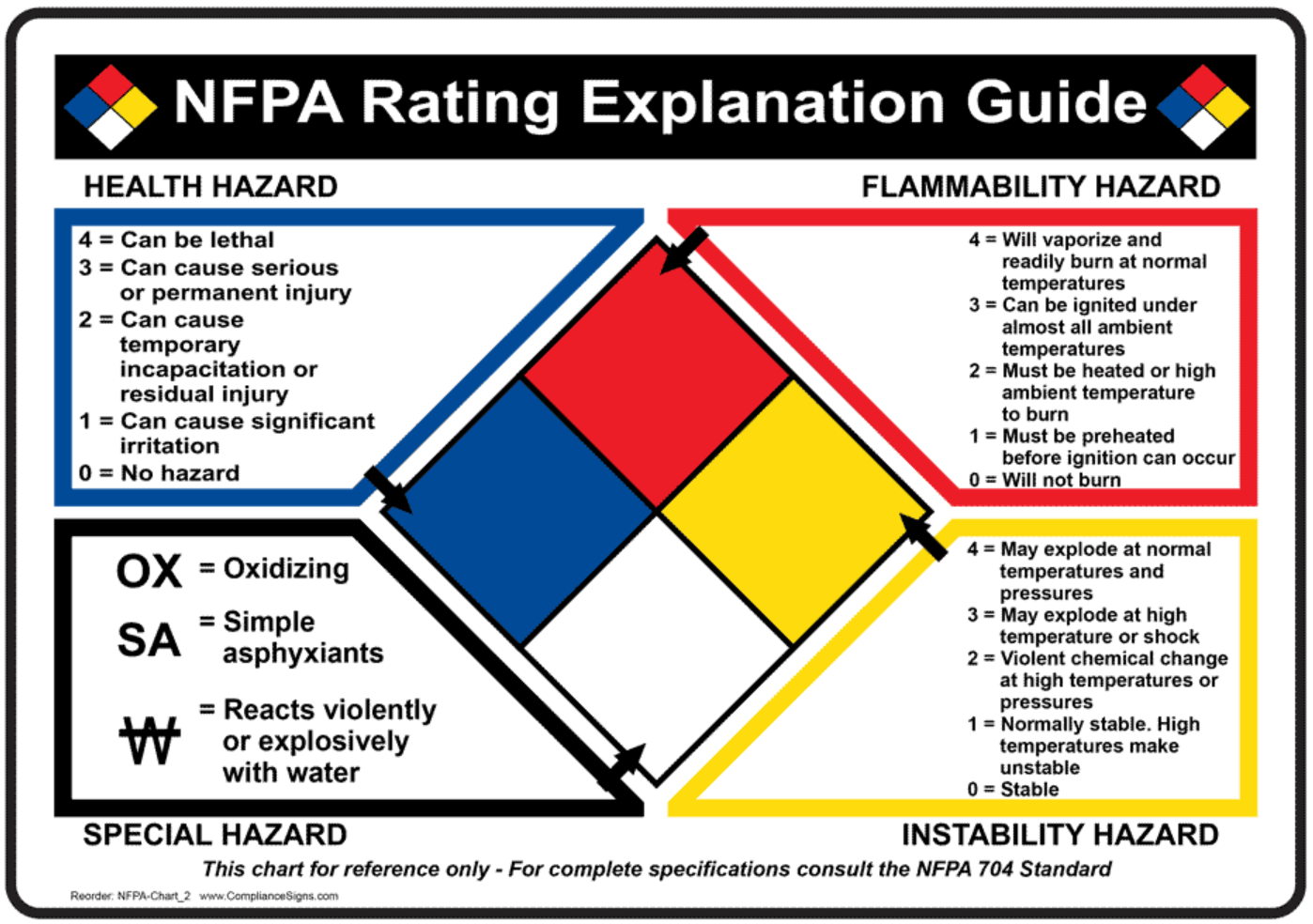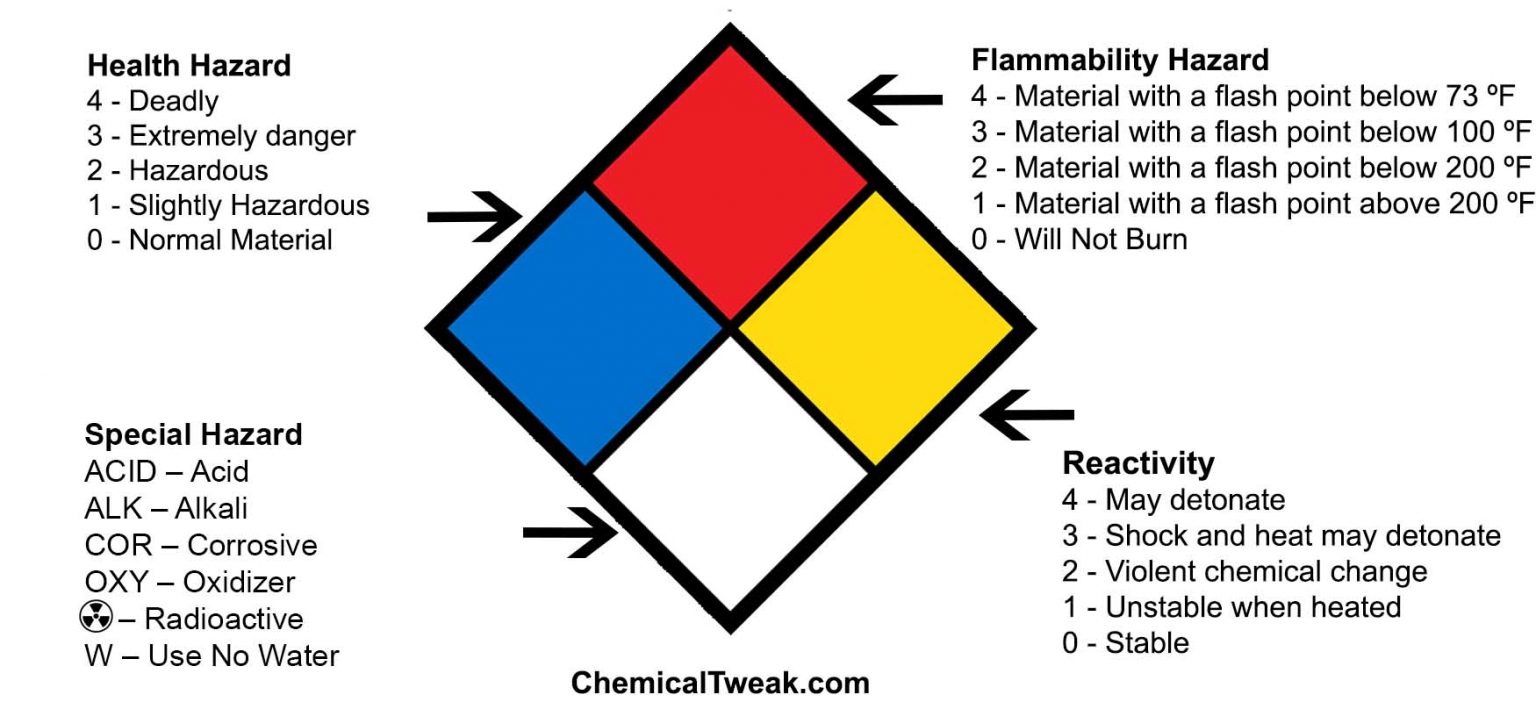nfpa fire diamond label is your visual gateway to quickly understanding chemical hazards, making it an essential tool for anyone working with or around chemicals. Developed to improve workplace safety and emergency response, the NFPA fire diamond label uses a smart combination of colors and numbers to give you instant insight into potential dangers—right at a glance. Whether you’re in a factory, lab, or warehouse, this label empowers you with knowledge that could make all the difference.
The NFPA fire diamond label is a square-on-point symbol consisting of four colored quadrants, each representing a different type of hazard: blue for health, red for flammability, yellow for instability, and white for special hazards. Each colored section contains a number or symbol that rates the severity or identifies unique risks, making it easy for staff and emergency responders to assess threats quickly. Knowing how to read, apply, and train others on this system not only ensures regulatory compliance but also boosts everyday safety in environments where hazardous materials are present.
Overview of the NFPA Fire Diamond Label
The NFPA fire diamond label is a widely recognized hazard identification system developed to provide essential information about the dangers associated with chemicals and materials during emergencies. Its quick-reference format allows first responders and personnel to make informed decisions about safety measures, containment, and response strategies. The distinctive diamond shape, color coding, and numerical ratings were designed to deliver clear, concise hazard details at a glance.
The National Fire Protection Association (NFPA), an American organization specializing in fire prevention and safety standards, first established the fire diamond system in the 1960s. The label is formally known as NFPA 704: Standard System for the Identification of the Hazards of Materials for Emergency Response. The standard is updated regularly by NFPA’s Technical Committee, with input from fire safety professionals, chemical engineers, and regulatory bodies.
The fire diamond’s relevance spans multiple industries including manufacturing, warehousing, laboratories, chemical processing, and transportation. It helps organizations comply with safety regulations and supports incident command during fire or chemical emergencies. The clear labeling reduces confusion, enhances situational awareness, and ultimately saves lives by enabling a swift, accurate response.
The Four Quadrants of the NFPA Fire Diamond
The NFPA fire diamond is divided into four color-coded quadrants, each representing a specific type of hazard. These quadrants provide a visual summary of health, flammability, instability/reactivity, and special hazards related to materials.
Color Quadrants and Hazard Representation, Nfpa fire diamond label

Each quadrant uses a specific color to indicate the class of hazard, and a number (0-4) to express the severity within that class. The white quadrant contains symbols for special hazards not covered by the other three.
| Blue (Health) | Red (Flammability) | Yellow (Instability/Reactivity) | White (Special Hazards) |
|---|---|---|---|
| Indicates health risks from exposure, such as toxicity or corrosiveness. | Shows how easily the material can ignite or catch fire. | Represents the likelihood of a substance to react or explode under normal or emergency conditions. | Lists unusual hazards like oxidizers, water reactivity, or asphyxiant gases. |
| Typical hazards: acute toxicity, carcinogenicity, corrosive acids. | Typical hazards: gasoline, acetone, propane. | Typical hazards: ammonium nitrate, organic peroxides. | Hazards: OX (oxidizer), W (water reactive), SA (simple asphyxiant gas). |
Significance of the Numbering System

Numbers in the colored quadrants range from 0 (minimal hazard) to 4 (severe hazard). These ratings provide instant context for responders:
- 0 – No unusual hazard
- 1 – Slight hazard, minimal precautions necessary
- 2 – Moderate hazard, may require additional PPE or procedures
- 3 – Serious hazard, significant risk if not handled properly
- 4 – Severe hazard, extreme precautions mandatory
This standardized system helps ensure consistent communication and quick hazard recognition across different facilities and emergency teams.
Methods for Determining Hazard Ratings: Nfpa Fire Diamond Label
Accurately assigning ratings within the NFPA fire diamond requires systematic evaluation of the physical and chemical properties of each substance. Organizations typically rely on Safety Data Sheets (SDS), testing, and reference to NFPA 704 guidelines to ensure correct hazard assessment.
Procedures for Assessing Hazard Categories
Assessment involves reviewing toxicity, flash point, reactivity with water or air, and other relevant characteristics. Consultation with chemical databases and regulatory standards ensures reliable ratings for each quadrant.
Examples of Substances and Their Ratings

The following examples demonstrate how various common substances are rated using the NFPA system:
- Gasoline: Health 1, Flammability 3, Reactivity 0, Special Hazard – None
- Sulfuric Acid: Health 3, Flammability 0, Reactivity 2, Special Hazard – None
- Hydrogen Peroxide (30%): Health 2, Flammability 0, Reactivity 3, Special Hazard – OX
- Acetylene: Health 1, Flammability 4, Reactivity 2, Special Hazard – SA
Comparison of Physical and Chemical Hazard Criteria
Physical hazard ratings focus on properties such as flammability and explosiveness, while chemical hazard ratings evaluate toxicity, corrosiveness, and long-term health effects. For example, a highly flammable solvent might have a high red (flammability) rating but a low blue (health) rating, whereas a corrosive acid could rate high in blue (health) and yellow (reactivity).
Interpreting the White Quadrant (Special Hazards)
The white quadrant is reserved for special or unique hazards not captured by the other three categories. Symbols and abbreviations in this section convey risks that require specific handling procedures or emergency responses.
Common Symbols and Abbreviations
The following are some of the most frequently encountered symbols in the white quadrant, each indicating a distinct special hazard:
- W (with a strikethrough): Material reacts dangerously with water
- OX: Material is an oxidizer and can intensify fires
- SA: Simple asphyxiant gas, such as nitrogen or helium, that can displace oxygen
- ACID: Acidic hazard
- ALK: Alkaline hazard
- COR: Corrosive substance
- RAD: Radioactive hazard
Importance of the White Quadrant in Emergency Response
Situations where the white quadrant plays a critical role include incidents involving water-reactive metals or oxidizing agents. For instance, if a firefighter encounters a drum labeled with “W,” they know to avoid using water in suppression efforts, preventing a violent or explosive reaction. Similarly, an “OX” symbol alerts emergency teams to take precautions against aggressive fire intensification due to oxidizers.
Epilogue
The nfpa fire diamond label stands out as a simple yet powerful visual tool that brings clarity and safety to environments filled with hazardous materials. By understanding how to interpret and properly use this label, you’re not just following best practices—you’re actively safeguarding your team, your workplace, and yourself. Investing time in training, correct application, and troubleshooting makes the difference between a safe workday and a critical emergency, and the NFPA fire diamond is a key part of that safety equation.
